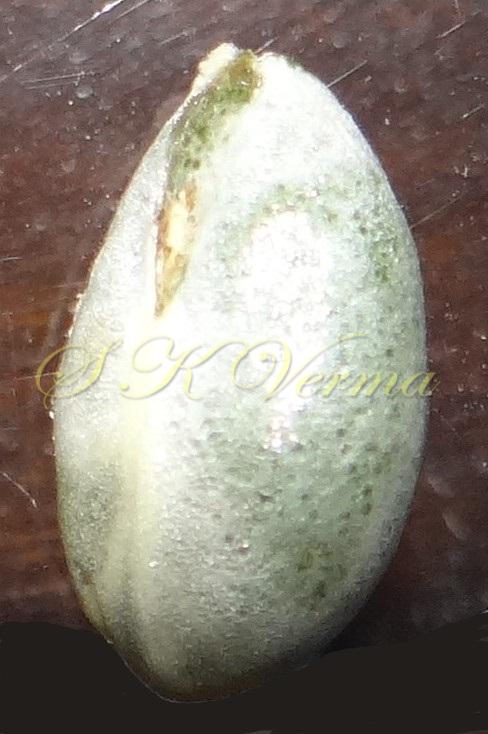MURRAYA
Murraya
Koen. ex L., Mant. 2: 554. 1771; Hook. f., Fl. Brit. India 1: 502. 1875; Collett, Fl. Siml. ed. 2: 79. 1921 (Reprint 1980); Talbot, For. Fl. Bomb. Pres. and Sind, 1: 192. 1909; Brandis, Ind. Trees, 113. 1911; Parker, For. Fl. Punj. ed. 1: 65. 1918 (Reprint 1973); Kashyap, Fl. Lahore 61: 1936; Zhang & Hartley, China @ eFloras.org 11: 85; Fl. Pak. @ eFloras.org p. 16; Murraea Murr., Syst. ed. xiii. 331.1774.
Small evergreen trees or shrubs, unarmed. Leaves alternate, unipinnate, pari- or imparipinnate; leaflets 5-27, alternate, petioluled. Flowers actinomorphic, bisexual, 5-merous, hypogynous, ellipsoid, obovoid or subcylindrical in bud, in panicles, few- to many-flowered racemes or cymes. Sepals 5, basally united. Petals 5, free, imbricate. Stamens (8)10, free, alternating long and short, filaments subulate. Disk more or less elongated. Ovary 2-5-locular seated on a disk, 1-2 ovules per loculus, ovary narrowed into a style, style elongate, at length deciduous; stigma capitate or lobed. Fruit a 1-2-seeded berry; seeds hairy or glabrous.
16 species
Murraya koenigii
Murraya koenigii
(L.) Spreng., Syst. Veg. 2: 315. 1817; Hook. f., Fl. Brit. India 1: 503. 1875; Collett, Fl. Siml. ed. 2: 79. 1921 (Reprint 1980); Brandis, Ind. Trees, 113. 1911; Parker, For. Fl. Punj. ed. 1: 66. 1918 (Reprint 1973); Sharma & Kachroo, Fl. Jammu (Illustr.) 2: t. 51.1983; Kaur & Sharma, Fl. Sirmaur 192. 2004; Singh & Sharma, Fl. Chamba Dist.218. 2006; Stewart, Punj. Pl. 349. 1869; China @ eFloras.org 11: 87; Fl. Pak. @ eFloras.org p. 17.
A small tree, ca. 3.5 m tall, deciduous, fragrant, bark dark grey, branches pubescent. Leaves alternate, up to 30 cm long, pari- or imparipinnate, crowded towards tip of branches, gland-dotted; leaflets 9-27, opposite, subopposite or alternate, 2-5 cm x 1-2 cm, ovate to ovate-lanceolate or orbicular, apex obtuse, subacute, acuminate, sometimes emarginate, base obtuse to rounded, oblique, margin irregularly crenulate, the lower leaflets often suborbicular or obovate, much smaller than the upper, glabrous or so above and pubescent beneath; rachis and petioles pubescent, petioles 1.5-2.5 mm long; petiolules 1-4 mm long. Flowers 7-12 mm long, Flowers actinomorphic, bisexual, 5-merous, hypogynous, white, in much branched terminal, pedunculate, corymbose-cymes. Calyx ca. 1 mm long, cupulate, tube longer than lobes, lobes 5, triangular, pubescent, persistent. Petals 5, free, ca. 7 mm, long, linear-oblong, rounded at the apex, gland-dotted. Stamens 10, free, 5 shorter and 5 longer, long and short alternating; filaments dilated at base. Ovary 2-locular, ovules 1 or 2 per loculus; style short; stigma capitate. Berry globose-ovoid, 1-1.5 cm x 0.5-0.7 cm, bluish black when ripe, 1(or 2)-seeded. Seeds ca. 4 mm long, black, seed coat membranous.
Common Names: Sweet Neem, Curry Tree, Ganhela, Curry Vepila; Curry Patta (Hindi)
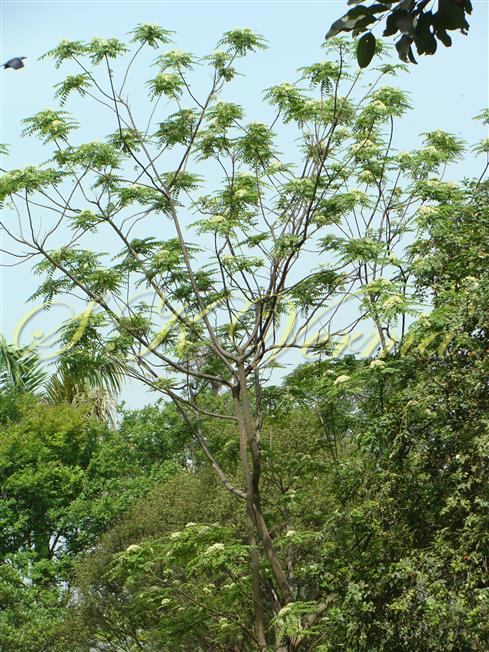
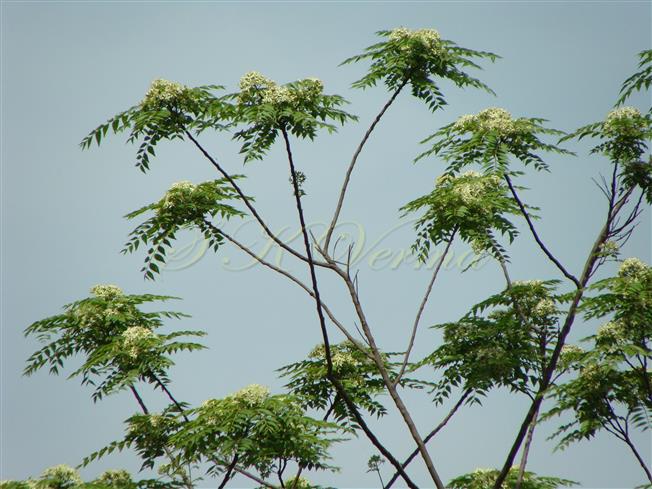
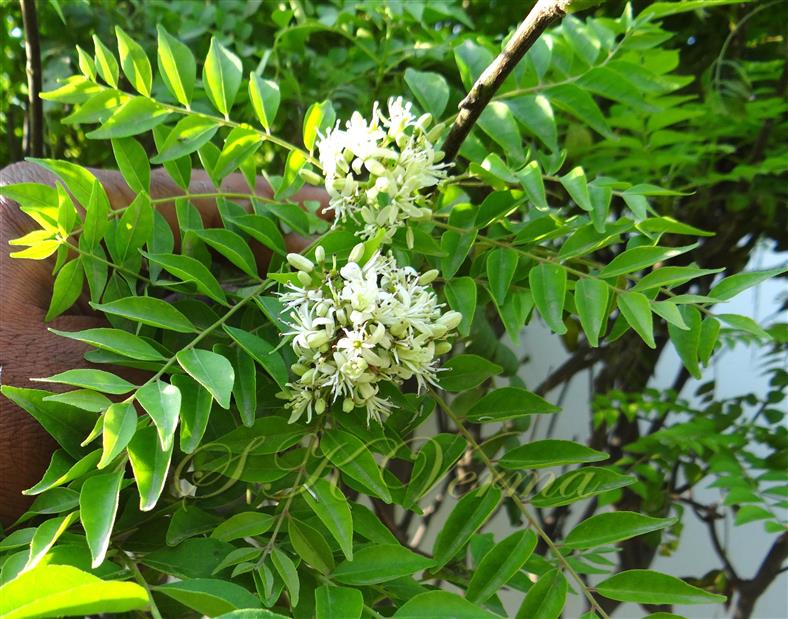
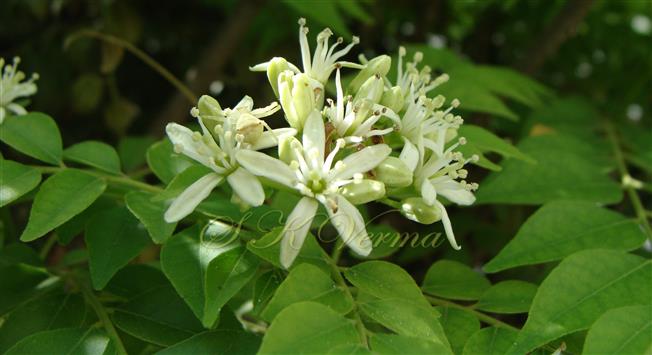
-4653.jpg)
 with fruits-1266.jpg)
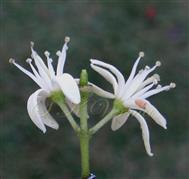
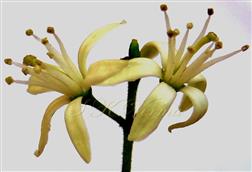
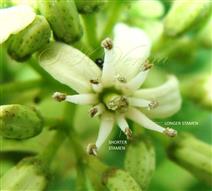
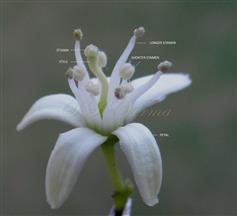
-DSC04988.jpg)
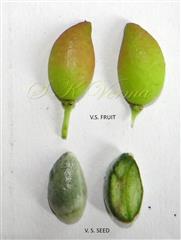
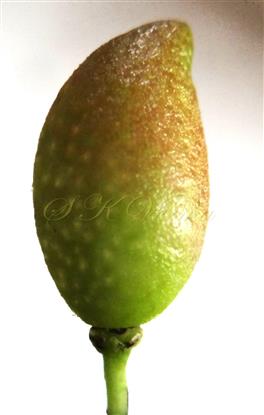
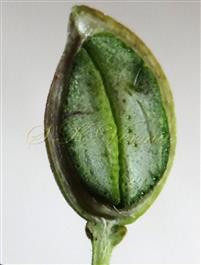






-4653.jpg)
 with fruits-1266.jpg)




-DSC04988.jpg)



